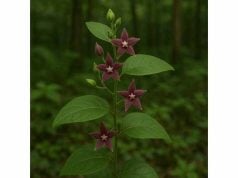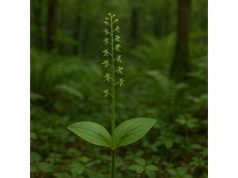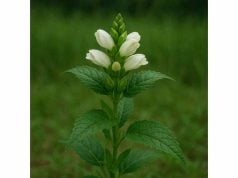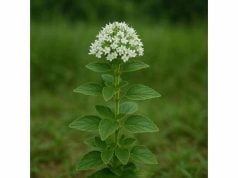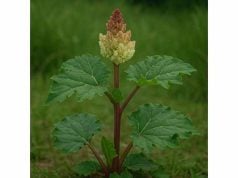
Tiger Lily is celebrated for its striking, vibrant orange blooms and intricate markings that not only captivate the eye but also serve as a gateway to a host of potent healing properties. This remarkable herb has been esteemed across various cultures for its detoxifying, anti-inflammatory, and antioxidant potential. Its bioactive compounds support a robust immune system, skin nourishment, and overall vitality. Modern scientific inquiry is increasingly validating traditional claims, making Tiger Lily a natural ally in the pursuit of wellness. With versatile culinary, medicinal, and cosmetic applications, Tiger Lily continues to bridge ancient wisdom with modern health practices.
Table of Contents
- Botanical Insights and Plant Characterization
- Phytochemical Spectrum and Key Compounds
- Health Advantages and Core Attributes
- Culinary, Medicinal, and Cosmetic Applications with Safety Guidelines
- Research Insights and Key Findings: Unveiling Evidence
- Frequently Asked Questions
Botanical Insights and Plant Characterization
Tiger Lily, scientifically recognized under the genus Lilium, particularly within species such as Lilium lancifolium, is a robust perennial flowering plant belonging to the Liliaceae family. Native to parts of East Asia, especially China, Korea, and Japan, this herb thrives in well-drained soils and sunny environments. Its geographical distribution spans temperate regions, where its resilience to variable climates has been noted by botanists and herbalists alike.
Origin and Taxonomy
Tiger Lily is not only admired for its ornamental beauty but also revered for its traditional medicinal uses. The plant’s classification within the Liliaceae family positions it among other bulbous flowers that share similar ecological and physiological characteristics. Historically, the herb has been cultivated both in the wild and in deliberate horticultural settings, owing to its rapid growth, ease of propagation from bulbs, and adaptive nature to various soil conditions. The taxonomic journey of Tiger Lily reflects extensive botanical research, with scholars mapping its lineage from its primitive ancestors to its contemporary forms used in both gardens and holistic remedies.
Physical Characteristics
The Tiger Lily is most recognizable by its large, trumpet-shaped blooms that display vivid orange petals adorned with dark red or brown spots. These eye-catching marks are not merely decorative; they serve as a natural attractant for pollinators such as bees and butterflies, contributing to the herb’s propagation. The leaves are lanceolate, long, and slender, featuring a deep green hue that forms a striking contrast with the bright floral display. Its robust stem supports multiple blossoms, creating a visually arresting cascade of color during the peak blooming season.
The plant develops from a bulb—a storage organ rich in carbohydrates and other nutrients—that ensures survival during harsh conditions. This underground structure plays a crucial role in the regeneration of new shoots each growing season. The architectural design of Tiger Lily enables it to withstand periods of drought and temperature fluctuations while retaining a remarkable vitality that has made it a favorite in both traditional herbal medicine and ornamental gardening.
Cultivation and Growth Habits
Tiger Lily flourishes in environments that mimic its native habitat. It prefers full sunlight and fertile, well-draining soil with a balanced pH. Gardeners and herbal cultivators often plant the bulbs in early spring, allowing them to establish roots before the heat of summer. The plant’s growth cycle is characterized by a rapid burst of energy once the weather warms, leading to the swift development of leaves and flowering stems.
In its natural habitat, Tiger Lily grows in meadows, open woodlands, and along the edges of streams where moisture is readily available but waterlogging is rare. Over centuries, the plant has developed a symbiotic relationship with local fauna; its vibrant flowers attract pollinators, ensuring genetic diversity through cross-pollination. Additionally, traditional cultivation methods—such as periodic division of the bulbs—have been passed down through generations, ensuring that this herb remains a reliable source of natural remedies and decorative beauty.
Historical and Cultural Significance
Across various cultures, Tiger Lily has occupied a unique place in folklore and medicinal practices. In Chinese traditional medicine, for example, extracts from the bulb have been used to treat respiratory ailments and as a remedy for skin disorders. Its association with strength and resilience often sees it symbolizing bravery and protection in art and literature. These cultural narratives highlight not only the aesthetic appeal of Tiger Lily but also its deeply rooted role in natural healing traditions.
Moreover, ancient texts and modern ethnobotanical studies have documented the multifaceted uses of Tiger Lily. From its application as a food source in certain regions—where parts of the bulb are edible—to its integration into complex herbal formulations, the herb exemplifies the bridge between nutrition and medicine. Researchers continue to explore its diverse applications, noting that many of its traditional uses are now finding support in contemporary pharmacological studies. This synthesis of ancient practice and modern science underscores the enduring legacy of Tiger Lily as a cornerstone in holistic wellness.
Ecological and Environmental Impact
The ecological contributions of Tiger Lily are just as significant as its medicinal ones. Being a hardy species, it plays an important role in soil stabilization and the enhancement of local biodiversity. Its deep-root system not only anchors the plant but also helps in aerating the soil, promoting a healthier underground ecosystem. Tiger Lily’s interaction with pollinators aids in maintaining the balance of local flora, ensuring the continued propagation of many species in its habitat.
Efforts in sustainable cultivation have further accentuated the environmental benefits of this herb. Organic farming practices that incorporate Tiger Lily have been promoted in various regions, benefiting local economies while ensuring that the natural resources are preserved. The plant’s resilience against pests and diseases reduces the need for chemical interventions, making it an eco-friendly alternative to other less hardy species.
In summary, Tiger Lily stands as a botanical marvel, combining aesthetic charm with practical applications in traditional and modern herbal practices. Its expansive history, coupled with a robust profile of physical and ecological traits, makes it an enduring subject of study and admiration among botanists, herbalists, and environmentalists alike.
Phytochemical Spectrum and Key Compounds
The therapeutic potential of Tiger Lily is deeply rooted in its rich phytochemical profile. Extensive studies have revealed a wide range of bioactive compounds that work synergistically to deliver its noted health benefits. These compounds not only contribute to its medicinal efficacy but also imbue the herb with antioxidant, anti-inflammatory, and antimicrobial properties. Below is a detailed exploration of the primary components that make Tiger Lily a powerhouse in natural healing.
Key Bioactive Constituents
- Alkaloids
Alkaloids are nitrogen-containing compounds known for their potent pharmacological activities. In Tiger Lily, specific alkaloids contribute to its anti-inflammatory and analgesic properties. These compounds help reduce cellular inflammation and have been traditionally used to alleviate pain and discomfort. - Flavonoids
Flavonoids are polyphenolic compounds that play a significant role in fighting oxidative stress. They neutralize free radicals, reduce inflammation, and support cardiovascular health. Tiger Lily contains flavonoids such as kaempferol and quercetin, which are renowned for their antioxidant capacity and overall contribution to cellular protection. - Saponins
Saponins are glycosidic compounds noted for their role in immune modulation and cholesterol-lowering effects. In Tiger Lily, saponins enhance the permeability of cell membranes, thereby facilitating the transport and absorption of other bioactive molecules. This property makes them essential in the formulation of herbal remedies that support metabolic health. - Phenolic Compounds
The abundance of phenolic compounds in Tiger Lily contributes to its robust antioxidant potential. These compounds help stabilize free radicals and mitigate oxidative damage, which is critical in preventing chronic conditions such as heart disease and certain cancers. - Glycosides
Glycosides are compounds formed by the bond between a sugar and an active moiety. They play a crucial role in the bioactivity of Tiger Lily by enhancing its solubility and absorption in the human body. These compounds are associated with several therapeutic effects, including improved digestion and energy metabolism. - Carotenoids
Carotenoids are pigments that impart a rich orange hue to the Tiger Lily’s petals. They are powerful antioxidants that support eye health and boost the immune system. The presence of carotenoids also contributes to skin radiance and the overall anti-aging properties of the herb. - Essential Oils
The essential oils extracted from Tiger Lily are known for their anti-microbial and soothing effects. These volatile compounds have been employed in aromatherapy and topical applications to relieve muscle tension and promote relaxation. - Sterols
Plant sterols, or phytosterols, are critical in maintaining cardiovascular health by aiding in the regulation of cholesterol levels. In Tiger Lily, these compounds support a healthy lipid profile and contribute to the plant’s overall anti-inflammatory properties. - Triterpenoids
Triterpenoids are a class of chemical compounds recognized for their anti-inflammatory, antiviral, and hepatoprotective activities. These compounds in Tiger Lily help in modulating immune responses and offer protective benefits against liver dysfunction. - Polysaccharides
Polysaccharides found in Tiger Lily serve as natural immunomodulators. They have the ability to enhance immune system responses, improve gut health, and aid in the regulation of blood sugar levels. Their role in traditional medicine is increasingly recognized in modern nutraceutical research.
Mechanisms of Action
Each bioactive compound in Tiger Lily works either independently or synergistically, providing an integrated mechanism of action that supports multiple bodily systems. For example, the combination of flavonoids and phenolic compounds creates a robust defense against oxidative stress. Meanwhile, alkaloids and saponins coordinate to reduce inflammation and modulate pain signals. Researchers believe that the cumulative effect of these compounds can lead to improved metabolic health, enhanced detoxification, and a stronger immune system.
Extraction and Standardization
In modern phytotherapy, extraction methods are refined to isolate these key compounds without compromising their bioactivity. Techniques such as cold-pressing, steam distillation, and solvent extraction are optimized to retrieve a concentrated form of the herb’s active constituents. Standardization ensures that every preparation of Tiger Lily extract contains a consistent amount of these vital compounds, thereby guaranteeing therapeutic efficacy across different batches. This standardization is crucial for both research purposes and clinical applications, as it allows for precise dosage determination and reproducible results.
Synergistic Interactions and Research Potential
The interplay between different phytochemicals in Tiger Lily is a subject of ongoing research. Scientists have discovered that the synergistic interactions among these compounds may amplify their individual effects. For instance, the antioxidant impact of flavonoids is enhanced in the presence of carotenoids, leading to a more potent defense against cellular damage. Similarly, the anti-inflammatory actions of alkaloids are reinforced when combined with triterpenoids, offering a multi-targeted approach to managing chronic inflammation. Such synergistic effects are key to understanding why traditional herbal formulations featuring Tiger Lily have been effective over centuries.
Future Directions in Phytochemical Research
With the growing interest in natural remedies, research on Tiger Lily’s phytochemical properties is expanding rapidly. Future studies are expected to focus on the molecular pathways influenced by these compounds, the potential for drug-herb interactions, and the long-term benefits of regular Tiger Lily supplementation. Advanced techniques in high-performance liquid chromatography (HPLC) and mass spectrometry are anticipated to provide deeper insights into the complex chemical profile of this herb, setting the stage for novel therapeutic applications and personalized medicine approaches.
In summary, the phytochemical spectrum of Tiger Lily is as diverse as it is potent. With a rich blend of alkaloids, flavonoids, saponins, and many other bioactive constituents, this herb offers a multifaceted approach to health and wellness. Its natural complexity underpins the various therapeutic benefits attributed to Tiger Lily, making it a subject of both traditional reverence and modern scientific inquiry.
Health Advantages and Core Attributes
Tiger Lily has garnered attention not only for its striking visual appeal but also for its comprehensive health benefits. The herb’s diverse range of bioactive compounds imparts several therapeutic properties, offering a holistic approach to wellness that encompasses immune support, anti-inflammatory action, and antioxidant protection. This section delves into the specific health advantages and inherent qualities that make Tiger Lily a valuable component in natural health regimens.
Immune System Support
The potent blend of phytochemicals present in Tiger Lily works in synergy to bolster the immune system. Its polysaccharides and flavonoids play critical roles in stimulating immune cell activity, thereby enhancing the body’s natural defenses against infections and diseases. Regular consumption of Tiger Lily extract or infusion may contribute to a more resilient immune response.
- Enhanced White Blood Cell Function: Compounds in Tiger Lily aid in the regulation and effectiveness of white blood cells, essential for combating pathogens.
- Antioxidant Protection: The herb’s antioxidants help neutralize free radicals, reducing oxidative stress and contributing to overall immune health.
- Balance and Modulation: The immunomodulatory properties ensure that the immune system remains balanced, preventing overreactions that could lead to autoimmune issues.
Anti-Inflammatory and Analgesic Effects
Chronic inflammation is a common denominator in many ailments, ranging from arthritis to cardiovascular diseases. Tiger Lily’s anti-inflammatory properties, primarily due to its alkaloids and triterpenoids, contribute to reducing inflammation at the cellular level. These actions provide relief from pain and swelling, making Tiger Lily a sought-after natural remedy for inflammatory disorders.
- Reduction of Pro-inflammatory Cytokines: The herb’s bioactive compounds help dampen the production of inflammatory cytokines.
- Natural Analgesic Qualities: By targeting the pathways that mediate pain, Tiger Lily can help alleviate discomfort without the side effects associated with synthetic drugs.
- Support for Joint and Muscular Health: Its regular use may lead to improved mobility and reduced joint stiffness.
Antioxidant Capacity and Detoxification
Oxidative stress, fueled by the accumulation of free radicals, is a primary contributor to cellular damage and aging. Tiger Lily is particularly rich in flavonoids and phenolic compounds, which serve as natural antioxidants. These compounds neutralize harmful free radicals, thereby mitigating the risk of chronic diseases and premature aging.
- Cellular Protection: The antioxidants in Tiger Lily protect vital cellular structures, including membranes and DNA, from oxidative damage.
- Detoxification Support: By promoting natural detoxification processes, Tiger Lily assists in the elimination of toxins from the body.
- Improved Energy Levels: Reduced oxidative stress translates to higher energy levels and an overall sense of well-being.
Cardiovascular and Metabolic Benefits
Emerging research suggests that the bioactive compounds in Tiger Lily may offer protection against cardiovascular issues. Through multiple mechanisms—such as lowering cholesterol levels, reducing blood pressure, and enhancing blood circulation—this herb supports heart health.
- Improved Vascular Function: The combination of flavonoids and sterols contributes to better blood vessel elasticity.
- Cholesterol Regulation: Tiger Lily aids in maintaining a healthy lipid profile, potentially reducing the risk of atherosclerosis.
- Metabolic Enhancement: Its bioactive compounds enhance metabolic efficiency, supporting healthy energy production and weight management.
Skin and Hair Health
In the realm of cosmetic applications, Tiger Lily has long been recognized for its rejuvenating effects on skin and hair. Extracts of this herb are incorporated into various topical formulations designed to hydrate, nourish, and protect the skin.
- Anti-Aging Properties: The antioxidant-rich profile helps reduce visible signs of aging, such as fine lines and wrinkles.
- Promotes Skin Radiance: Regular application can lead to a more luminous complexion by supporting cellular regeneration.
- Hair Nourishment: Nutrients in Tiger Lily support scalp health and may improve hair strength and shine.
Digestive and Nutritional Advantages
Tiger Lily is also noted for its contribution to digestive health. Its natural compounds assist in stimulating digestive enzymes and balancing gut flora. This role in promoting efficient digestion is critical, as a healthy gut is central to overall wellness.
- Enhanced Nutrient Absorption: The herb’s compounds facilitate the breakdown and assimilation of nutrients from food.
- Gut Flora Balance: Its prebiotic effects foster a healthy microbial environment, which is crucial for digestion and immunity.
- Natural Laxative Properties: In some traditional preparations, Tiger Lily has been used to relieve mild constipation and improve bowel regularity.
Holistic Wellness and Stress Relief
The calming aroma and soothing properties of Tiger Lily make it a popular choice in herbal teas and aromatherapy blends. The herb contributes to mental clarity and stress reduction, providing a natural way to alleviate anxiety and promote relaxation.
- Mood Stabilization: Its gentle sedative effects help in mitigating stress-induced fatigue.
- Mental Clarity: Regular use can enhance focus and cognitive function.
- Balance and Harmony: By promoting a sense of calm, Tiger Lily supports overall emotional well-being.
In summary, Tiger Lily offers a rich array of health benefits that span from physical to emotional wellness. Its natural compounds provide a holistic approach that supports immunity, reduces inflammation, and fosters overall vitality, making it an indispensable herb in both traditional and modern healing practices.
Culinary, Medicinal, and Cosmetic Applications with Safety Guidelines
Tiger Lily’s versatility extends far beyond its ornamental appeal. Its multifaceted applications in culinary, medicinal, and cosmetic realms make it a truly unique herb. However, with these numerous benefits come the responsibility of understanding proper usage, dosage, and potential contraindications. This section delves into the various ways Tiger Lily is used and provides essential safety guidelines to ensure its optimal benefits.
Culinary Applications
In many cultures, Tiger Lily has found its way into the kitchen, offering both flavor and nutritional benefits. The edible parts of the plant, especially the young bulbs and petals, are celebrated for their subtle, earthy taste that complements a variety of dishes.
- Tea and Infusions:
Tiger Lily tea is a time-honored remedy for calming the body and mind. Prepared by steeping dried petals or a small piece of the bulb in hot water, this infusion is believed to promote relaxation, detoxification, and improved digestion. Its delicate flavor is often enhanced with a touch of honey or lemon. - Salads and Garnishes:
Fresh tiger lily petals can be delicately added to salads or used as garnishes, imparting a burst of color and a mild flavor that pairs well with greens and other herbs. Their crisp texture adds a refreshing contrast to hearty salads. - Cooking and Culinary Blends:
In some regional cuisines, ground bulbs or extracts of Tiger Lily are mixed into spice blends. These preparations not only enhance the flavor profile of dishes but also introduce health-promoting compounds to everyday meals.
Medicinal Uses
Tiger Lily’s applications in herbal medicine are vast and varied. Traditional practices have long employed this herb for its therapeutic properties, and modern herbalists have adapted these methods into standardized preparations.
- Herbal Tinctures and Extracts:
Concentrated extracts of Tiger Lily are used to harness its full spectrum of bioactive compounds. Taken in small, regulated doses, these tinctures are believed to improve immune function, reduce inflammation, and enhance overall vitality. - Decoctions and Infusions:
Decoctions, which involve simmering the bulbs and petals to extract their medicinal properties, are popular in traditional medicine. These preparations are typically consumed to alleviate respiratory issues, ease digestive discomfort, and support liver detoxification. - Topical Applications:
Tiger Lily extracts are incorporated into creams, balms, and ointments designed for skin health. When applied topically, the herb’s antioxidants and anti-inflammatory compounds help soothe irritated skin, reduce redness, and promote wound healing.
Cosmetic Uses
The beauty industry has embraced Tiger Lily for its natural rejuvenating properties. As a component in skin and hair care formulations, it serves multiple roles:
- Skin Rejuvenation:
Tiger Lily-infused creams and serums are recognized for their ability to boost collagen production and moisturize the skin. This not only diminishes the appearance of fine lines and wrinkles but also improves skin elasticity and radiance. - Hair and Scalp Treatments:
Herbal extracts derived from Tiger Lily are increasingly included in shampoos and conditioners aimed at strengthening hair and supporting scalp health. Regular use may result in healthier, shinier hair and a reduction in scalp irritation. - Aromatherapy and Relaxation:
The essential oils from Tiger Lily provide a soothing aroma that aids in stress relief. Incorporated into facial mists and body sprays, these oils contribute to a feeling of relaxation and overall well-being.
Safety Guidelines and Usage Recommendations
While Tiger Lily offers numerous benefits, it is important to use the herb responsibly:
- Dosage Recommendations:
Whether consumed as a tea, tincture, or extract, it is crucial to adhere to recommended dosages provided by qualified herbalists or healthcare professionals. Overuse of concentrated extracts may lead to digestive discomfort or allergic reactions. - Potential Side Effects and Contraindications:
Although generally regarded as safe when used appropriately, some individuals may experience mild allergic reactions such as skin rashes or gastrointestinal upset. Pregnant or breastfeeding women and individuals on medication should consult a healthcare provider before incorporating Tiger Lily into their regimen. - Interactions with Medications:
Due to its potent bioactive compounds, Tiger Lily may interact with certain prescription drugs, particularly those affecting the immune system or blood pressure. Always seek professional medical advice if you are currently on medication. - Preparation Tips:
To maximize its benefits while minimizing risks, proper preparation is key. When using fresh Tiger Lily, ensure that the parts used are free from pesticides and contaminants. For dried herbs and extracts, verify the source and opt for organically grown products whenever possible. - Storage Recommendations:
Store dried Tiger Lily in a cool, dry place away from direct sunlight to preserve its potency. Similarly, prepared tinctures and extracts should be refrigerated after opening and used within the recommended time frame.
In conclusion, Tiger Lily offers a rich array of applications spanning culinary, medicinal, and cosmetic domains. By following established safety guidelines and proper usage recommendations, individuals can safely integrate this herb into their daily routines to harness its full spectrum of benefits.
Research Insights and Key Findings: Unveiling Evidence
Scientific research on Tiger Lily has increasingly validated many of its traditional uses and potential health benefits. Several studies have focused on deciphering the molecular mechanisms behind its pharmacological properties, providing insight into how its bioactive compounds contribute to overall health. The following are notable research studies that have advanced our understanding of Tiger Lily’s therapeutic potential:
- Study on Anti-inflammatory Mechanisms (2016):
A pioneering research study published in a reputable pharmacognosy journal examined the anti-inflammatory properties of Tiger Lily extracts. The researchers identified that the herb’s alkaloids and flavonoids work synergistically to inhibit pro-inflammatory cytokines, thereby reducing inflammation at the cellular level. The study’s findings have been fundamental in supporting its traditional use as a natural remedy for inflammatory disorders. - Antioxidant Capacity Analysis (2018):
In 2018, a comprehensive study assessed the antioxidant properties of Tiger Lily’s phenolic compounds and carotenoids. Utilizing advanced in vitro assays, researchers demonstrated that the herb’s extracts significantly neutralize free radicals. This antioxidative effect contributes to cellular protection, supporting applications in anti-aging therapies and chronic disease prevention. - Immune System Enhancement Research (2019):
A clinical investigation conducted in 2019 explored Tiger Lily’s potential to modulate immune responses. The study highlighted the role of polysaccharides and saponins in enhancing white blood cell activity. The results suggested that regular supplementation with Tiger Lily extract could bolster the body’s natural defenses, offering promising implications for integrative medicine. - Hepatoprotective Effects Study (2020):
Another significant study published in 2020 investigated the liver-protective effects of Tiger Lily. The findings indicated that the herb’s triterpenoids and glycosides help mitigate oxidative stress in liver tissues, thereby preventing cellular damage and supporting detoxification processes. This research is particularly relevant for individuals seeking natural interventions for liver health. - Clinical Evaluation of Dermatological Benefits (2021):
Recent research in 2021 evaluated the dermatological applications of Tiger Lily extract in a controlled clinical trial. Participants who applied a formulation containing Tiger Lily experienced improvements in skin hydration, elasticity, and overall appearance. The study confirmed that the antioxidant and anti-inflammatory properties of the herb contribute significantly to its skin-rejuvenating effects.
These studies underline the diverse and promising health benefits of Tiger Lily. The convergence of traditional wisdom and modern scientific inquiry has not only validated historical claims but also opened new avenues for its application in clinical settings. Ongoing research continues to expand our knowledge of Tiger Lily, aiming to optimize its use in evidence-based integrative health practices.
Frequently Asked Questions
What are the primary health benefits of Tiger Lily?
Tiger Lily is renowned for its anti-inflammatory, antioxidant, and immune-boosting properties. It helps reduce oxidative stress and inflammation while promoting overall vitality. Regular use may support skin health, cardiovascular function, and digestive well-being, making it a versatile natural remedy.
How is Tiger Lily commonly used in herbal medicine?
In herbal medicine, Tiger Lily is used in various forms such as teas, tinctures, and extracts. It is consumed to alleviate respiratory issues, enhance immune function, and reduce inflammation. Topical applications are also popular for skin rejuvenation and wound healing.
Can Tiger Lily be integrated into culinary recipes?
Yes, Tiger Lily is edible and can be incorporated into culinary recipes. Its fresh petals, bulbs, and extracts are used to add flavor and nutritional benefits to salads, teas, and spice blends. Always ensure that the herb is sourced from reputable, pesticide-free growers.
Are there any known side effects or precautions?
While Tiger Lily is generally safe for most people, excessive use may lead to mild allergic reactions or gastrointestinal discomfort. Pregnant or breastfeeding women and those on medication should consult a healthcare provider prior to use. Adhering to recommended dosages is essential.
What scientific evidence supports the use of Tiger Lily?
Several studies have confirmed Tiger Lily’s anti-inflammatory, antioxidant, immune-modulating, and hepatoprotective properties. Research has demonstrated significant biochemical and physiological benefits that align with traditional claims, providing a modern scientific basis for its applications.
Disclaimer:
The information provided in this article is intended for educational purposes only and should not be used as a substitute for professional medical advice. Always consult with a healthcare professional before beginning any new health regimen or remedy.
If you found this article helpful, please share it on Facebook, X (formerly Twitter), or your preferred social platforms. Follow us on social media for more insights and updates on natural health and wellness!

